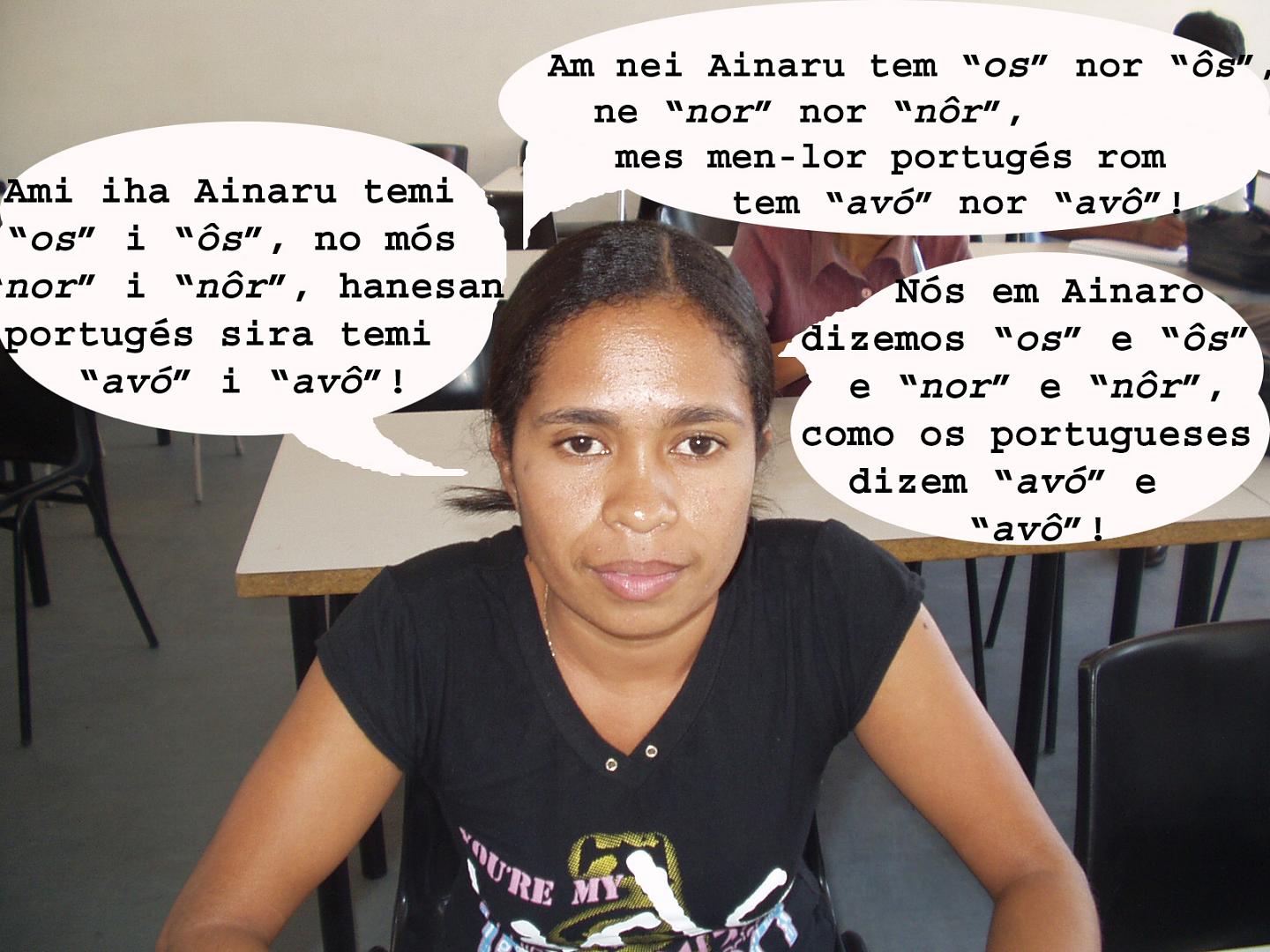| Mambai | |
|---|---|
| Spoken in | East Timor |
| Native speakers | (80,000 cited 1981)[1] |
| Language family |
Austronesian
|
| Language codes | |
| ISO 639-3 | mgm |

Languages of Timor island. Mambai is in orange.
|
|

The Mambai (also Mambae, Manbae) are the second largest ethnic group in East Timor. Their language is also called Mambai (or Mambae, Manbae).
Contents |
People [link]
The Mambai number about 80,000[2] from the interior of Dili District to the south coast of the territory, especially in the districts of Ainaro and Manufahi. Circular houses with conical roofs are typical dwellings,[3] and the Mambai cultivate maize, rice, and root vegetables.[2]
Ethnically Mambai politicians include Francisco Xavier do Amaral,[4] Manuel Tilman,[5] Lúcia Lobato,[6] and Fernando de Araújo.[6]
Language [link]
The language of the Mambai is also known as Mambai. It is a Central Malayo-Polynesian language, in the branch of Timor–Babar languages, and has ISO 639-3 code mgm.[7][8] It is considered one of the national languages, alongside the official languages Tetum and Portuguese. It is also spoken by some Timorese groups in Australia.
There are substantial differences between Mambai and Tetum. The English word "name," for example, is "kala" in Mambai, but "naran" in Tetum.[9] There are four dialects of Mambai: Damata (mgm-dam), Lolei (mgm-lol), Manua (mgm-man), and a fourth also called Mambai (mgm-mam).[7][8] The four dialects have largely homogeneous vocabularies.[10]
See also [link]
References [link]
- ^ Mambai at Ethnologue (16th ed., 2009)
- ^ a b Clifford Sather and James J. Fox (eds), Origins, Ancestry and Alliance: Explorations in Austronesian Ethnography, ANU E Press, 2006, Chapter 7.
- ^ Tony Wheeler, East Timor, Lonely Planet, 2004, p. 93.
- ^ Asian survey, University of California Press, 2003, Volume 43, Issues 4-6, p. 754
- ^ International Crisis Group, Asia Briefing N°65, 13 June 2007
- ^ a b East Timor Legal Information Site, 2007
- ^ a b Ethnologue language page: mgm
- ^ a b MultiTree language page: mgm
- ^ University of Hawaii Language Documentation Training Center: Mambae word list
- ^ Geoffrey Hull and Lance Eccles (eds), Studies in languages and cultures of East Timor, Volume 1, Academy of East Timor Studies, University of Western Sydney, 1998, p. 70.
Further reading [link]
People [link]
- Elizabeth Gilbert Traube, Ritual exchange among the Mambai of East Timor: gifts of life and death, Harvard University Press, 1977.
- Elizabeth Gilbert Traube, Cosmology and Social Life: ritual exchange among the Mambai of East Timor, University of Chicago Press, 1986.
Language [link]
- Geoffrey Hull, Celestino de Araújo, and Benjamim de Araújo e Corte-Real, Mambai Language Manual: Ainaro dialect, Sebastião Aparício da Silva Project, 2001.
- Alexandra Y. Aikhenvald and Robert M. W. Dixon (eds), Grammars in contact: a cross-linguistic typology, Oxford University Press, 2006, Chapter 6.
External links [link]
| This East Timor-related article is a stub. You can help Wikipedia by expanding it. |
| This article about an ethnic group in Asia is a stub. You can help Wikipedia by expanding it. |
https://wn.com/Mambai

Mambaí
Mambaí is a city in eastern Goiás state, Brazil. It is the easternmost city in that state.
Geography
Mambaí is one of the most isolated cities in the state of Goiás. It lies in the Vão do Paranã statistical micro-region less than 20 kilometers from the border with the state of Bahia. It is 61 kilometers to the main interstate highway, the BR-020, which links Brasília to Salvador. It is 250 kilometers to Brasília. The distance to the state capital of Goiânia is 512 kilometers. Municipal boundaries are with Posse, Buritinópolis, Damianópolis, and the state of Bahia. Highway connections from Goiânia are made by taking BR-153 / Anápolis / Alexânia / BR-060 / Planaltina / Formosa / BR-020 / Simolândia / GO-236.
Demographics
The population decreased 8.37.% from 1991 to 1996 and continued the decline from 1996 to 2000 with -4.02.%. In 1980 the population was 5,125 so in twenty-five years the increase has been negligible.
Economy
The economy was mainly based on agriculture, with extensive cattle raising occupying most of the territory. Most inhabitants were employed in small retail units, government jobs, and modest industrial transformation units. There were no banking institutions reporting in August 2007.



